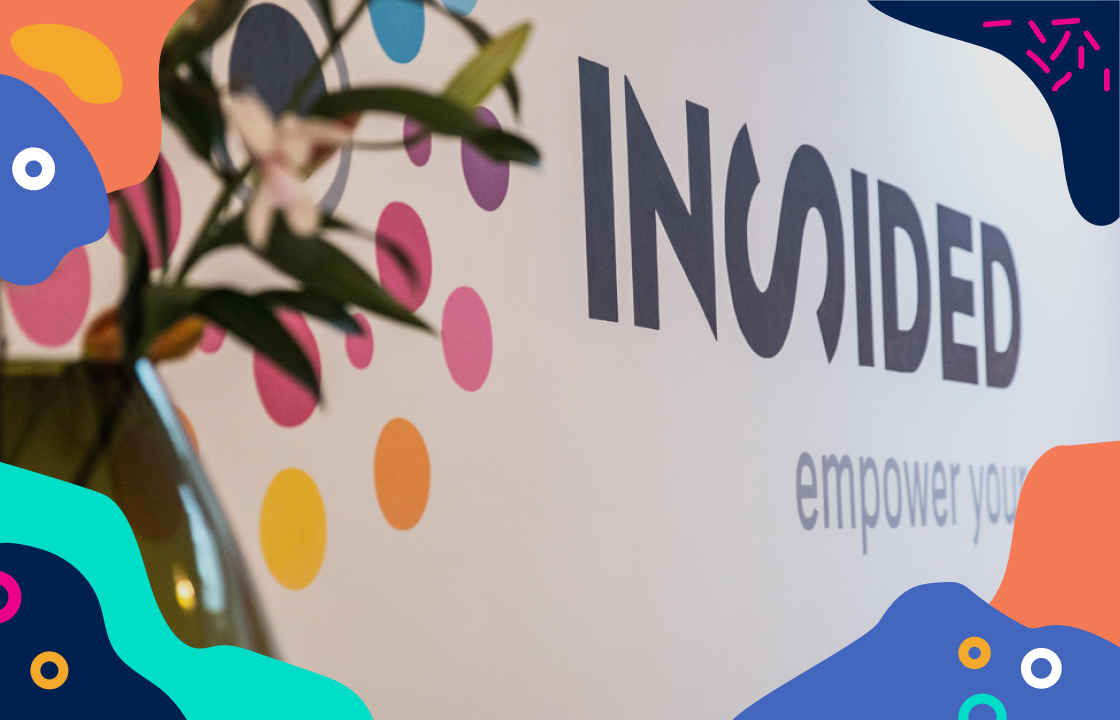Upselling freemium users onto paid plans and converting free trials into paying customers is undeniably key for growth in B2B software businesses. At inSided, we’ve seen that the self-service user communities that our customers run have a significant impact on these growth initiatives, so I sat down with our Customer Experience Director, Martine van Deursen, to figure out how some software companies are leveraging their community-driven knowledge bases for freemium model growth.
Grab a cup of coffee and settle in. For those who prefer to read rather than listen, you’ll find a transcript of our conversation here too.
Danielle: Hi there, I’m Danielle Juson, Content Marketing Manager at inSided, and today I’ve got with me Martine van Deursen. I hope I pronounced that right, Martina?!
Martine: Yes, that’s perfect.
Danielle: And Martine is our Customer Experience Director here at inSided. inSided helps B2B software companies scale customer support, make their Customer Success teams more efficient using automation, and build better products based on the insights they can gather from their users. So, today we are going to be talking just a little bit about how self-service can impact free trial registrations for B2B software products and also impact upgrades from free to paid tiers on premium models. And if you haven’t read last week’s blog post that we published on this, be sure to check it out. It’s over on the inSided blog and that post is Even Freemium Users Deserve Quality Support. So, first of all, how many of our customers, Martine, are currently operating on a free trial or a freemium model?
Martine: That would be actually more than half of our customers within the B2B software space. So they offer either free trial or freemium product – and you can think of companies like Webroot, Cumulus, Nutanix, and we ourselves do offer a free trial for our platform as well, to be honest.
Danielle: Okay, and what’s the primary use case that those customers are finding for their community driven knowledge bases?
Martine: If you have users who try out your software – that could be via trial, freemium – you don’t want them to run into any issues, because often they are still validating [the product], and you want them to get most out of their use so that they have a positive experience with it. So, you want to make sure you can see that it fits their needs, that they have all relevant info in place to decide whether they want to continue to use the product. Therefore it is important that you want to provide them with all of that, and also be as efficient as possible, because often you see that these companies do have a lot of trial users, but you want to make sure that everybody is helped, but you also want to make sure that you don’t get overloaded with all of their questions, so you don’t want to answer the same question multiple times, for instance.
Danielle: Yup.
Martine: So that is one of the most important things, I would say, as a use case. In a community, you will be able to have all these new questions and answers and insightful conversations added on a daily basis, but also answered by peers, for instance – so you don’t have to scale up your own customer success team to make sure that everybody has access to the latest information. To even bring this one step further, we see that companies don’t only offer this within a community, but also in particular within their product, and they have it context related. So when I am a trial user – let’s say I’m using some kind of software that also has an analytics section – and I want to see what kind of data I can report on, then I would visit that part of the software that I’m using and I would be able to read all related FAQs, best practices, while I am playing around with, for instance, the report capabilities. I don’t have to stop my journey, I can just see what I need within using the product.
Danielle: Yeah. Okay. And how do these companies, how do these B2B software companies in particular, find the community that they’re using actually impacts their upsells onto paid tiers of their product, or their upsells from free trials?
Martine: That can be via different ways, I would say. First of all, engagement is a very important factor, so users will be able to get more value out of the product as they use the features that are discussed within the community. So, let’s say a new feature is launched or a customer is selling more about how to make use of something, then, you will be more engaged and more likely to make use of these features, and also you will know how to use it. These tips and tricks that are offered by the others will help you to be more successful, and I would also say that it’s key that you are confident and have the confirmation that a product actually will help you to meet your goals. So, in that way it can be really key in converting to a paid version – or maybe buying something more from a particular product.
Martine: I said various ways. So one other way, for instance, is also that a customer wants to be sure that he’s making the right choice, and when you use a community, you will be part of a particular user group, so you have the chance to interact and meet other customers; other users of the software that you are trying out. That might help you because these customers will face the same challenges, and probably have the same hurdles that you run into, so if they can help you to solve these challenges, that will also help you to bring you further and reach your goals. You will have the feeling that you belong to an inspiring and a helpful group of other great customers, for instance.
Danielle: Yeah. Super nice. And I think, at inSided we’re also using this approach right, so-
Martine: Yeah. That’s definitely true, so we also have prospects running a free trial or they have a demo where they can try out our own software and we also encourage them to make use of our own community, which we call inSpired so they can speed up their own onboarding. We want to make sure that product adoption is high at these beginning stages. That is when you really have the best chance of getting users upgraded to a paid version of the software, so these first sets are the most important phase, I would say – we really make use of our own community and help to build their confidence to make sure they make the right decision to pay for it.
Danielle: Yeah, nice. Does a community like this also give you insights about how your trial users or your freemium users are actually using your product, and what they’re doing with it?
Martine: Yeah, definitely.
Danielle: So how does that work exactly?
Martine: So, a community is a way of immediate interaction. When I talk about our own community, for instance, we see all questions that people ask, the content they visit and that tells us more about their needs, so: what are they looking for, what are they asking… and it also helps our product managers know what can be improved within our product, which new features could be of added value and also a bit more about the priorities and our community. There’s also an ideation section, so our customers can put in their own ideas and others can vote on it. It’s not only the vote – it’s also really the discussions that our customers are having that can be of value.
Martine: They will explain more about their use cases, for instance, interact with each other and discuss why something would be valuable to them, and our employees then at inSided – specifically, the product managers – also reach out proactively to them to validate use cases, ask for input and in fact we do often ask trial customers to give their input as well. They have a fresh view on our software, we can think along with them on how we can satisfy their needs, how our product can be used or upgraded for instance and in the end, it should also be the case that continuously improving your product and the user experience are the real success factors for conversion, I would say.
Danielle: Absolutely. And how about actually instigating those free trail registrations or freemium registrations in the first place, because I understand that some of our customers at inSided are actually using their user community to generate new freemium users. Maybe you can tell me a bit more about that?
Martine: Yeah, definitely. What we’ve seen in general is that communities do get a lot of organic traffic, so customers are looking for a solution that fits their needs, or are interested in a particular problem that they would like to solve, and nine out of ten times, as I do myself, you go to Google and you start your journey there. What we see is there is a lot of dynamic content on the community, many people interacting with it, and that makes sure that communities are often ranked very, very high within the search results. So, for our communities, for instance, we see that 70 to 80% of all community visits are coming from Google and also that these visits are 5 to 15% of all incoming traffic to the website of one of our customers. There’s a lot of traffic going to the community, and therefore it’s an excellent place to also let visitors know that you also do offer a free trial or a freemium product, just like you would do on your other website pages, for instance.
Danielle: Yeah.
Martine: Maybe it’s also nice to give one example that I’ve seen from our customers. Nutanix for instance, when you go to their community, you see a button to register for what they actually call the Community Edition of their products that can be used free of cost. If you have registered, then you get automatic access to a hidden community space and you can find all the download instructions, the documents, you can ask any questions you would like to other users and direct with it, the whole product is really built based on the community and they will also help you to get the most out of it, so what I really like about this is that more people will end up using it, but also get most out of it, because of the helpfulness of the community. That’s a really great example, I think.
Danielle: Yeah, that’s a really interesting example. So, Nutanix then actually created the freemium, or free trial products, based solely on their community efforts, which is really cool.
Martine: Definitely.
Danielle: Nice. So, it looks like there’s a really strong use case here for utilizing a customer community like this, not only for upselling freemium or trial users onto premium and paid tiers, but also for driving that initial freemium or trial registration in the first place. This has been a really interesting chat Martine, thank you for your time.
Martine: No problem at all. Thank you.
Danielle: Guys listening, if this is something that sounds interesting to you, drop us an email at hello@insided.com – we’d love to see what we could do for you. Speak to you next time.


